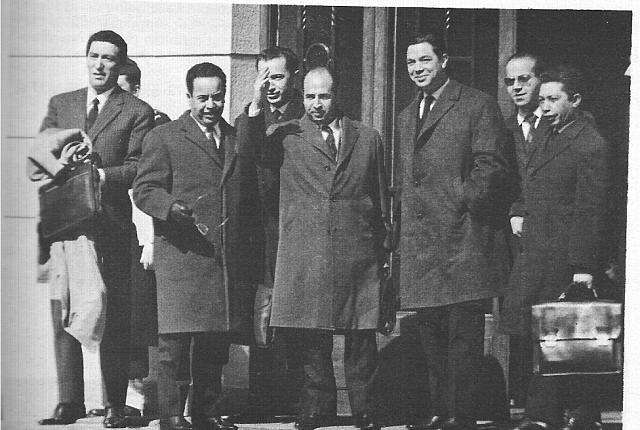The World’s Failure to Accept Jewish Refugees (1933-1941)
Until 1941, the Nazi regime sought to make Germany’s Jewish population emigrate rather than kill them – the systematic extermination would come later.
Why did this mass emigration fail? It ultimately failed for one simple reason: almost no country was willing to accept Jewish refugees in meaningful numbers.
If you don’t believe me, you might want to look at Hannah Arendt’s Eichmann in Jerusalem, which is a very insightful read.
Adolf Eichmann, later a key architect of the Holocaust, initially served as an “emigration expert” in Vienna, where he tried to find “solutions” for the expulsion of Jews. He was chosen for the task, as he had read a very short book on Zionism by Theodor Herzl. (Yup, the Nazis were no intellectuals.)
The Nazi Emigration Policy
In the early years of Nazi rule, many German Jews didn’t anticipate the full horror that would unfold. But as persecution intensified—through the Nuremberg Laws (1935) and escalating violence—more Jews sought to leave. Now the issue wasn’t if, but where to go…
The only ones eager to receive German Jews were early Zionist settlers in Palestine, who went on to broker a deal with the Nazis to support Jewish emigration to British Mandate Palestine: the Haavara Agreement.
The Evian Conference (1938): A Global Failure
In July 1938, U.S. President Franklin D. Roosevelt convened the Évian Conference in France, as Switzerland was reluctant to host it, fearing damage to its friendly relations with Nazi Germany.
Before the conference, the United States and Britain made a critical agreement:
Britain promised not to mention that the U.S. wasn’t filling its immigration quotas and any discussion of Palestine as a destination was excluded from the agenda.
Representatives from 32 countries attended, along with 24 observer organizations.
The Results? Almost Nothing.
Originally, the conference aimed to address German Jewish emigration. However, Eastern European representatives quickly turned it into a forum about their own “Jewish problems.” What began as a discussion about 500,000 German Jews suddenly became about potentially millions from across Europe. The humanitarian purpose faded—Jews were now seen as a “problem.”
Only one country committed to welcoming more Jewish refugees.
- The U.S. maintained its quota of 30,000 German/Austrian immigrants per year (exceeding it by 10,000 from 1938-1940)
- Britain accepted a similar number
- The Australian delegate T.W. White stated: “As we have no real racial problem, we are not desirous of importing one.”
- South Africa only accepted those with resident relatives
- Canada refused to make any commitment
- The French delegate declared France had reached “the extreme point of saturation regarding refugees”—a sentiment echoed by most others.
The sole exception was the Dominican Republic, which offered to accept up to 100,000 refugees—mainly because dictator Rafael Trujillo wanted “to whiten” the population.
Golda Meir later wrote:
“To sit there listening to delegates from 32 countries explain how much they wanted to help—but couldn’t—was devastating. I wanted to scream: Don’t you realize these ‘numbers’ are human beings?”
Hitler responded to the conference by saying he’d gladly help Jews leave if other nations wanted them. This wasn’t sarcasm—the Haavara Agreement proved the Nazis were willing to facilitate emigration when it suited them.
But Surely Countries Accepted Refugees Who Managed to Escape?
The MS St. Louis (1939): A Symbol of Closed Doors
In May 1939, the German liner MS St. Louis sailed from Hamburg with 937 Jewish refugees holding Cuban visas. When Cuba refused them entry, the ship sought refuge in the U.S. Despite direct appeals to Roosevelt, passengers were denied due to immigration quotas.
Forced back to Europe:
- Britain, France, Belgium, and the Netherlands took in about half the refugees
- 254 were later murdered in the Holocaust
Conclusion: A Preventable Tragedy?
How many Jews could have been saved if Evian had succeeded? We can’t know. While death camps like Auschwitz weren’t yet imagined in 1938, attendees knew:
- German/Austrian Jews were being stripped of rights
- Thousands had already been killed or driven to suicide
Let’s be clear: The Nazis committed the Holocaust—not the Evian attendees. But the conference remains a moral catastrophe.





